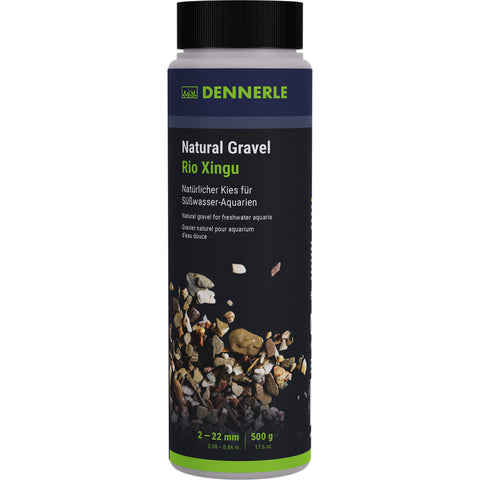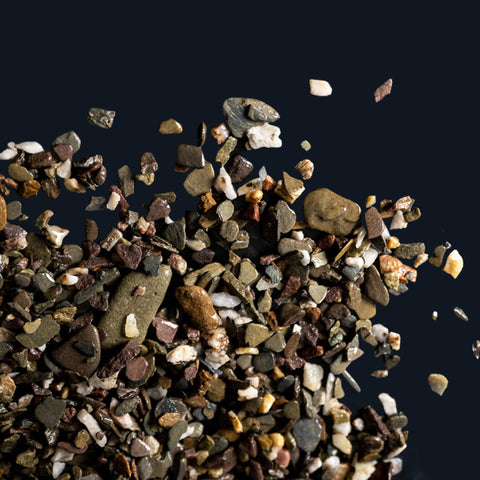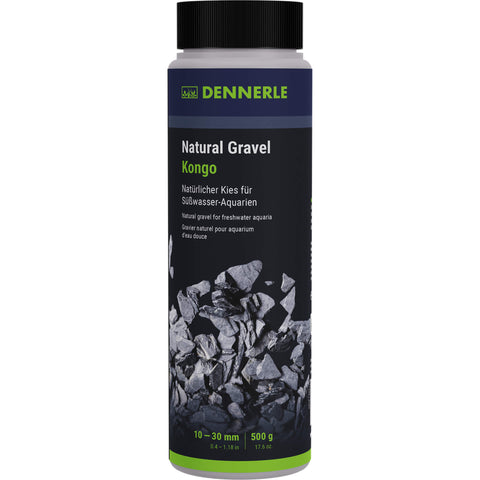41 products
Aquarium substrate
Aquarium sand, gravel & soil as aquarium substrate for aquariums
Choosing the right aquarium substrate is a decisive factor for the success of an aquarium. The substrate in the aquarium is an important factor in creating a healthy environment for the inhabitants of the aquarium and also influences the aesthetic appearance of the entire aquarium.
The right aquarium substrate
The substrate in the aquarium fulfils several important functions. It serves as a substrate for plants growing in the aquarium and provides them with support and nutrients. It also serves as a habitat and retreat for various bottom dwellers such as snails, shrimps and bottom-dwelling fish. The substrate also supports the nitrogen cycle in the aquarium by harbouring nitrifying bacteria that help break down harmful substances such as ammonia or nitrite.
Aquarium substrate types
There are different types of substrate that can be used for aquariums. A common choice is aquarium gravel, which is available in different grain sizes. Aquarium gravel provides good permeability for water and enables the root growth of plants. Another option is aquarium sand, which is often favoured for aquariums with bottom-dwelling fish. However, aquarium sand can reduce water permeability and therefore requires more careful maintenance. Other types of substrate such as special aquasoils offer specific properties for certain types of aquariums or plants.
Choosing the right aquarium substrate
When choosing the substrate for an aquarium, various factors should be taken into account. Firstly, you should choose a substrate that meets the needs of the planned inhabitants of the aquarium. For example, some fish species prefer a sandy substrate, while other species favour a coarse-grained gravel. It is also important to keep an eye on the pH value and water hardness of the aquarium water, as certain types of substrate can affect these water values.
Use and care of the aquarium substrate
Before placing the substrate in the aquarium, it should be thoroughly washed to remove excess dust and dirt and before adding water to the aquarium, it is advisable to place a plate or disc on top of the substrate to prevent the substrate from being stirred up. Maintenance of the substrate includes regular vacuuming of dirt and waste material and, if necessary, the removal of mulm. Mulm is an accumulation of organic matter that builds up in the substrate over time. Too much mulm can have a negative impact on the water quality and promote the growth of harmful bacteria. It is therefore important to clean the substrate carefully at regular intervals and to vacuum out mulm in order to maintain a healthy balance in the aquarium. In any case, be careful when cleaning the substrate, because even a well-intentioned cleaning of the substrate with the nitrifying bacteria it harbours can significantly disturb the balance of the aquarium.
Additives and fertilisers for the aquarium substrate
Depending on the requirements of the plants used in the aquarium, it may be necessary to add additional nutrients to the substrate. Various substrate fertilisers are available for this purpose. These can contain special minerals, trace elements and nutrients that support the growth and development of aquarium plants. To avoid over-fertilisation, it is important to follow the manufacturer's instructions exactly and adjust the dosage of additives and fertilisers accordingly.
The substrate plays a decisive role in the health and thriving of plants and animals in the aquarium. Careful selection, use and care of the substrate is therefore of great importance. By taking into account the needs of the planned inhabitants and carefully cleaning and maintaining the substrate on a regular basis, you can create and maintain a stable and healthy aquarium. It is advisable to inform yourself thoroughly before purchasing substrate and, if necessary, to seek the help of experts or experienced aquarists in order to make the best possible choice for your aquarium.
If you have any questions or require further information on the products we offer, we will of course be happy to assist you with our expertise.
































